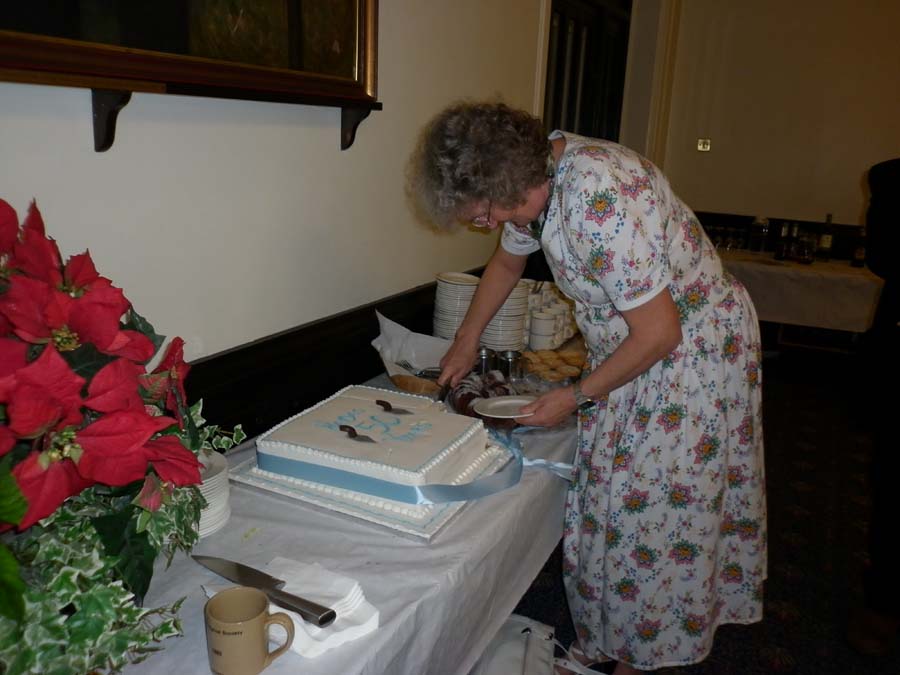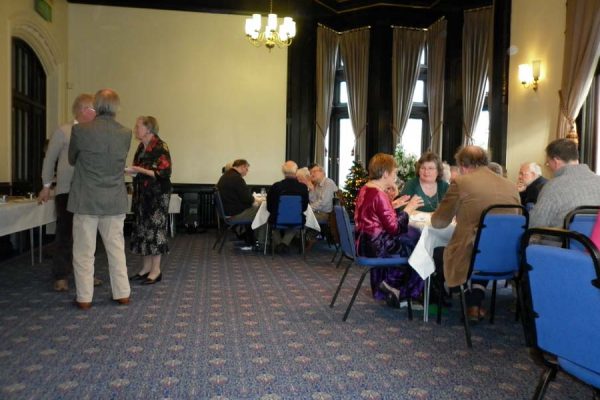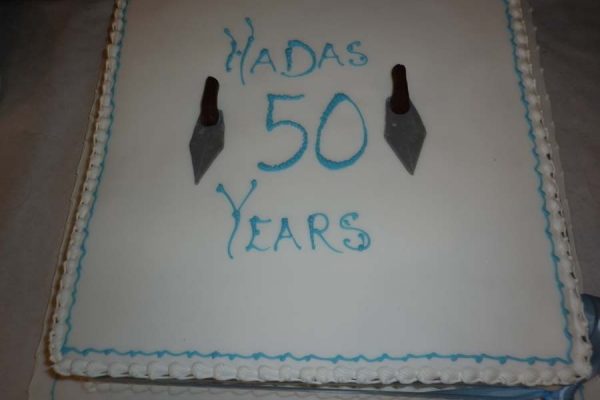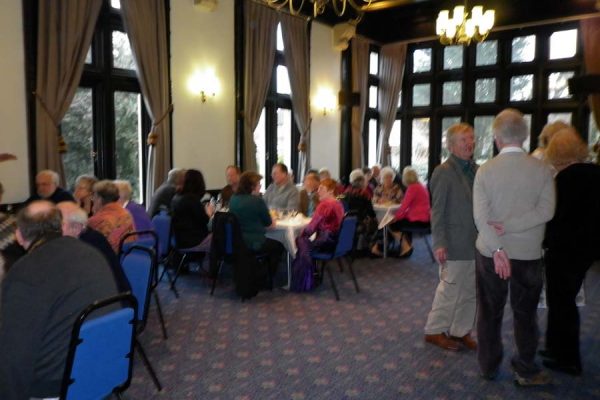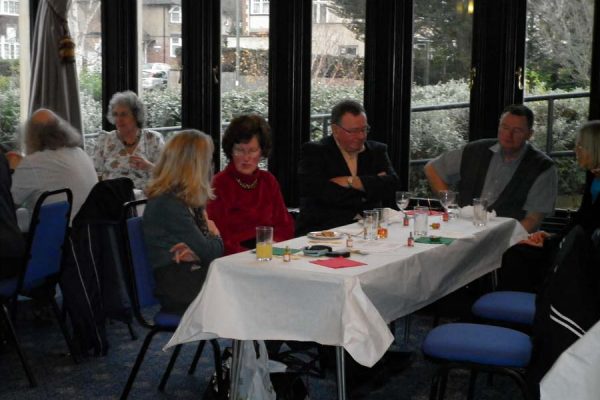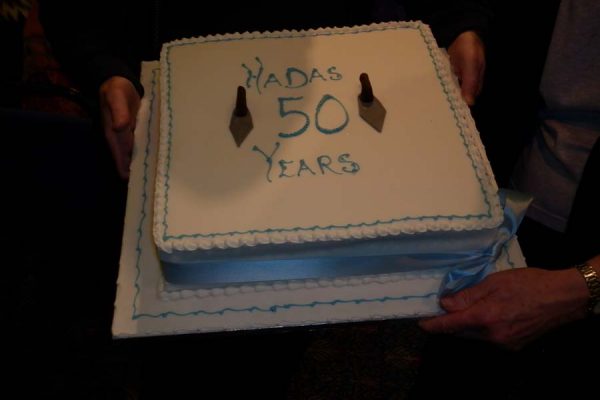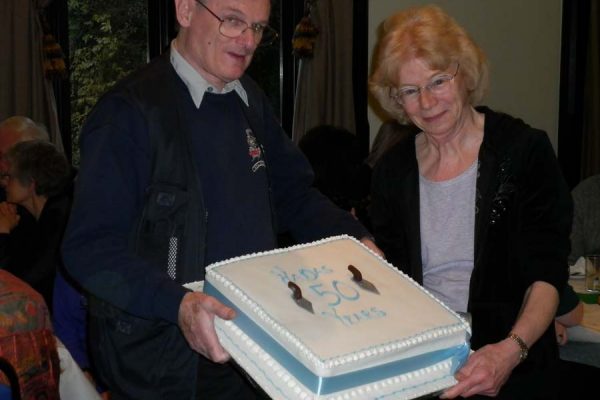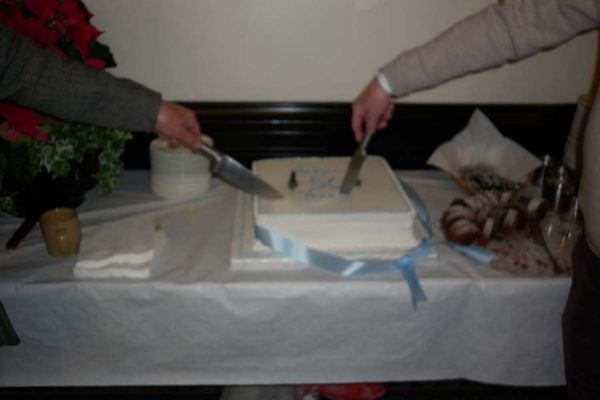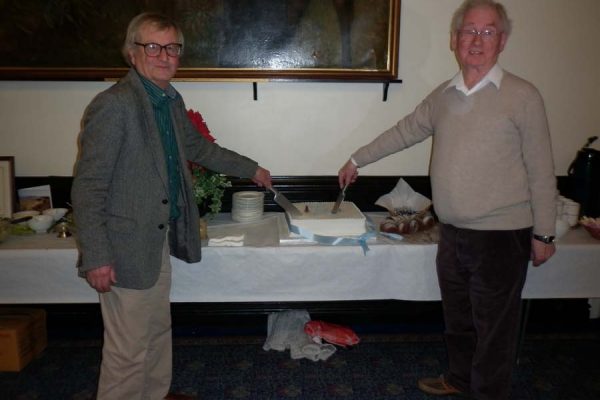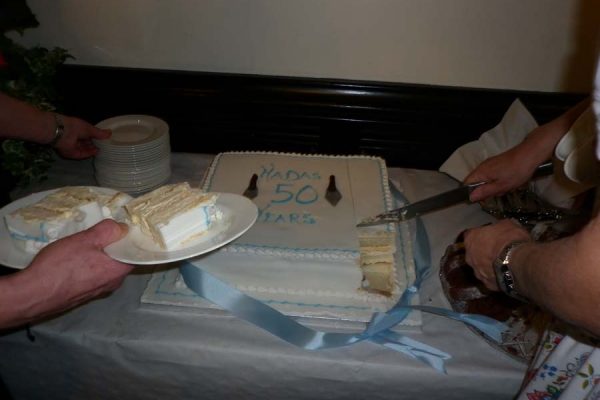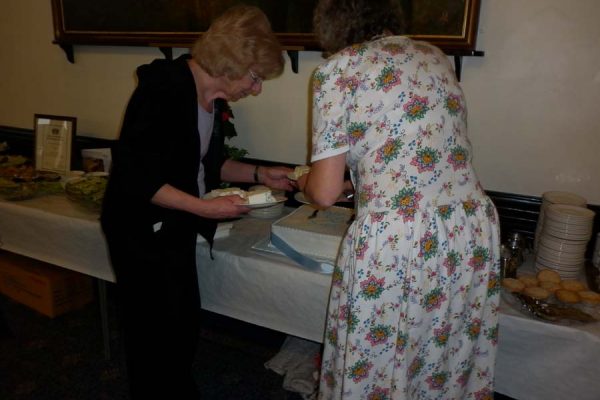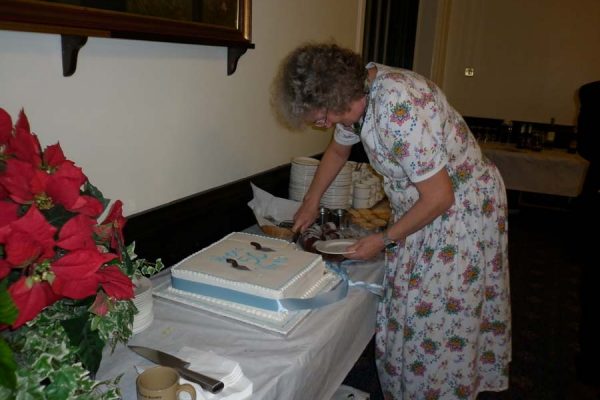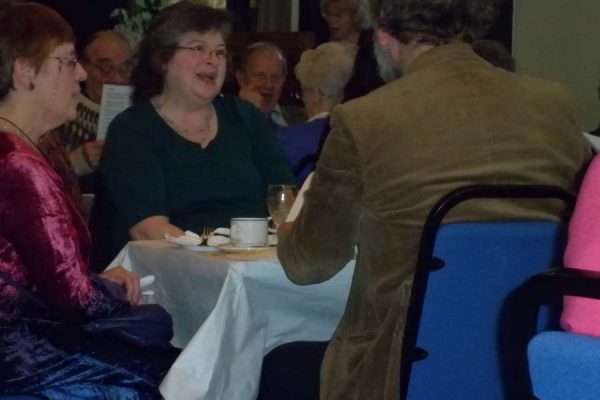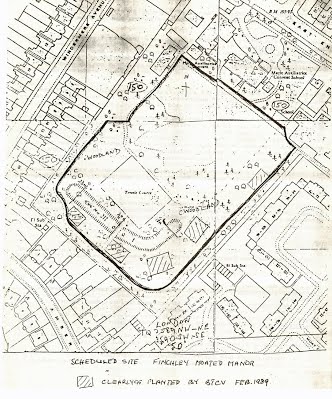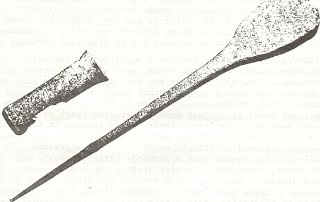NEWSLETTER 222: September 1989 Editors: Christine Arnott, Dawn Orr
After the lovely summer we have enjoyed, it is difficult to realise that Autumn is upon us – but, as you will see below, the academic season invites your attention.
HADAS DIARY
Saturday September 30th Walk in Highbury and Canonbury with Mary O’Connell
(Details and application form enclosed.)
Tuesday October 3rd Lecture on Excavation at Piddington Roman Villa by Roy Friendship – Taylor.
Saturday October 7th Minimart at St Mary’s Church Hall, Greyhound Hill, Hendon. N.W. 4.
Ring 203-0950. if you have saleable items available now. We do not like goods brought in on the day, as everything is sorted and priced beforehand. Also old helpers and new volunteers please ring in if you are available on that date. (See separate leaflet for details and Sales and Wants List of larger items.)
Tuesday November 7th Lecture on Pre-history in Greater London by Jon Cotton.
Tuesday December 5th Southwark Cathedral and Christmas -Dinner at “The George
Lectures are held at the Central Library, The Burroughs, Hendon. N. W.4. for 8.30 p.m. Last year, the doors were found to be closed on several occasions. If this occurs, please bang and ring until the porter hears you
For information on outings, lectures and walks, please ring 203 – 0950 and ask the programme Secretary.
FROM THE ORPINGTON AND DISTRICT ARCHAEOLOGICAL SOCIETY
EXCAVATIONS AT SCADBURY MANOR, CHISLEHURST
On Saturday 30th September and Sunday 1st October, the archaeological excavations at the moated manor site at Scadbury will be open to the public. Members of the Orpington & District Archaeological Society (ODAS) will give guided tours showing the work that is currently being done on the site, as well as the foundations of the drawbridge by the side of the moat. The moated area contains the foundations of the buildings associated with the Walsingham family that stood on the site in Elizabethan times.
Guided tours will start at 2.00 p.m. each day from the circular footpath at the point where it now goes pact the moated site. Follow the signs to the site from the Nature Centre in Grovelands Road, St Paul’s Cray. The walk from the Nature Centre takes about 15 minutes.
For elderly or disabled people, car parking is available close to the site, by free ticket only, for which application should be made (enclosing s.a.e. and stating for which day required) to Meekums, 27 Eynsford Close, Petts Wood. KENT. BR5 1DP
A warm welcome is extended to any HADAS member who would like to visit on ether of the above dates.
THE CRICKLEY – PAINSWICK TRIP 12th AUGUST,1989
A new version of a “bread and butter” letter, from Cherry Lavell.. Having had the bare-faced cheek to beg a “returned” coach ticket (and not even being a card-carrying HADAS member, though an avid reader of your invaluable Newsletter) I should not have been surprised to find myself ‘volunteered’ into writing this report on the very delightful August trip.
After a slightly shaky start, the journey to Gloucestershire went well, including a coffee stop at The Windmill near Burford and the Cotswolds looked their loveliest in the bright sun with passing clouds. Arriving at Crickley Hill Country Park at about 11.45 a.m. and needing to find the dig director, Dr Philip Dixon, I was despatched as the (ex-native) runner to find him Normally he is the first person I see whenever I visit Crickley, however this time it took two whole circuits of the hill (leaving messages all round) to run him to ground. The by-then somewhat restive party was rallied, and rewarded by a thoroughly fascinating tour.
We saw first the Dark Age (post-Roman, sub-Roman, what-have-you) area close under the ramparts, where the old Iron Age quarry scoops had been recycled as sunken-featured buildings with stone footings and turf walls. This gave us an immediate taste of the difficulties of the natural rock on this site: it is a fissured and fractured oolitic limestone which takes some practice to deal with. Nearby were big 4-post structures (presumed granaries) cut into the rock. There was also an Iron Age hearth in this area, originating in the Earliest Iron Age (conservatively, about 700 B.C.) and re-made in the Second Iron Age phase, about 500 B.C. (The main part of the EIA settlement was dug years ago and is rather inaccurately marked out by the Country Park authorities in set-flush concrete posts – blue for the early, long house phase, and yellow for the later 500-ish B.C. phase with its round houses.)
We then followed Phil through a gate which was also a time-gap of about 2,000 years, for it led us into the Neolithic causewayed enclosure which takes up the furthest promontory of the hill. Here there had been numerous phases of building and rebuilding, including more than one attack and burning, with 480 arrowheads clustered round a burnt entrance. (This, if I remember rightly, was the first site at which the myth of the peace-loving Neolithic people was first seriously dented.) Here too is the Long Mound, with its circular business end or ‘ritual’ terminal, which is only slowly giving up its secrets.
Beyond this area we found prehistoric crafts being demonstrated, this being the annual Open Weekend. Dr Ros Cleal was firing pots made of the local clay-in an open bonfire, and other pots she had made were on show. A flint-knapper in an Asterix T-shirt was doing fine pressure-flaking with an antler baton, and a trio of weavers were doing battle with a ware-weighted loom in the strong Severn Vale breezes. From here there were glorious views of the Vale, right up towards Evesham, with the Malvern Hills of Worcestershire and the Black Mountains of Wales beyond to the west. Past lunchtime now, so a hurried return to the coach for a quick munch before leaving for Painswick village.
Here we emptied rapidly out of the coach on a double yellow line – Painswick suffers the twentieth century as best it can. Through the churchyard, with its 99 yew trees (the 100th allegedly will never grow) and a splendid collection of table tombs, we were met by Mr Roy Truman, who acted as our guide to the 14th century church – much Victorian restoration reasonably well done. On display was a very large collection of kneelers made by needlewomen (and men) of the parish, beautifully crafted though variable in quality of design. We were then free to wander round the village, using the excellent guide map produced by the Painswick Women’s Institute – whoever said all they do is make jam? Many of us visited the exhibition of the Guild of Gloucestershire Craftsmen, and were duly staggered at the prices asked, even granting the superb quality of the bookbinding, woodcarving, screenprinting and everything else on show.
Then off to tea up the road in the hall of Christchurch – a splendid spread provided by Mrs Truman and her helpers. The homeward coach ride was enlivened by the customary raffle with several lucky winners and a handy sum made for HADAS funds.
Has this report suitably repaid your kind hospitality? I certainly had a lovely day, and happily echoed the warm vote of thanks which Alan Hill made to Dorothy Newbury for all her hard work in planning such a successful trip.
COALVILLE IN HENDON TED SAMMES
“Eyes Down” in N.W. 4 ……………
Walking along Brampton Grove recently, I inspected a pile of bricks from a house about four doors away from Brampton Court, opposite No. 63. My eyes soon espied some red facing bricks. It took some while to find a complete one with the maker’s name in the frog of the brick which was readable. It read : E. SMITH & CO. COALVILLE.
Coalville is in the Charnwood Forest area of Leicestershire, six miles southeast of Ashby de in Zouche. This area was developed by George Stevenson, who in 130 was living at Alton Grange at Ashby. In the area there was plenty of good clay for brickmaking, which needed no additions. Also in the area were coal-bearing seams, in which he had an interest. The addition of railway connections made transport possible for both products. Prior to “Beeching” Coalville was on the old L.M.S. Railway, so transport to a station near to Hendon would not have been difficult.
I suspect that these bricks which found their way to Brampton Grove were probably not made until after the turn of the century.
VISIT TO BARNET
Andrew Selkirk has received a recent copy of the “Young LAMAS Newsletter” and sends us the following. extracts, in which some of the youngsters describe their visit to Chipping Barnet on Saturday, :rd June , 1989. We reproduce in toto some illustrations which we think our readers will find amusing as well as informative. The Young Lamas visitors began their “Local Studies Days” at Barnet Museum where they were met by Jennie Cobban, and first of all we visited the Tudor Hall, which used to be part of Barnet’s Grammar School. In the centre of the Hall was the whipping-post. The older boys during Tudor times were expected to speak in Latin all the time – if they lapsed into English they got a dose of the whipping post. A number of us
were relieved that whipping posts are not important parts of schools today The gentleman showing us the Hall remembered it being used when he was at the school ! We also saw where the dormitories used to be – boys used. to sleep five to a bed.In the afternoon we were taken on a walking tour of Barnet – seeing how some people (see HADAS July Newsletter to find out who ‘some people’ are – had pulled down important Tudor stables, before the archaeologists could excavate them.””Perhaps the most interesting thing out of all the trip was why Chipping Barnet was called Chipping Barnet,we were soon to find out, for ‘Chipping means ‘market’ and ‘Barnett’ is thought to mean ‘a place cleared by burning’ . Chipping Barnet was a market in the place cleared by burning.”
Update on the Rose Theatre from Young LAMAS
Excavations by archaeologists from the Museum of London at the site of the Rose Theatre have now finished. You will be pleased to know that everyone agrees that the site should be kept and that eventually it should be on display to the public. There are, however, different opinions as to how this would best be done.
The theatre itself was small, the stage area perhaps being no more than 13 metres. The archaeologists found a lot of organise (animal or plant matter) debris on the floor; this could be the remains of a roof hatch.
All the information is important in helping archaeologists and historians to understand how early playwrights, such as Shakespeare, staged their plays. If you want any more information, telephone or write to me: Elizabeth Hess, Young LAMAS, Museum of London, London Wall, EC 2. Telephone: 600 – 3699. (HADAS younger readers please note.)
” Update on the Huggin Hill ‘Roman Baths’ from Young LAMAS
We were very lucky to see this site when we did. Although the developers did agree not to destroy it completely, it is not going to be open to the public, as it will be at the bottom of their new building. To help protect the site for future archaeologists, the site was covered by a layer of sand.
The interesting finds have been on display in the front hall of the Museum of London.
Let us know if there is any interesting or important local history or archaeological work going on near to where you live. ”
THE WHETSTONE PROJECT by Ted Sammes
The Whetstone project has been like Topsy; although starting small, it has grown of its own volition until it now it has become the major HADAS project of the summer, with sections working in local history, a regular drawing and photography group as well as its loyal band of diggers.
As some members will know, central Whetstone has several listed houses. These are where Totteridge Lane and the Great North Road meet opposite the Griffin pub. There used to be a set of toll gates here, and it was a convenient place for refreshment of man and horse.
In 1981 the Society investigated one of these houses, and we produced a splendid set of drawing of 1260 High Rd Whetstone. This building has since been very beautifully restored by the present owners, a local building company who now use it as their offices. The society’s 1981 work may have contributed to this happy outcome.
The present project is at No.1264, and between them the three buildings form as remarkable a group as any in the Borough. From our present investigations they appear they have been in continuous use for the last 450 or 500 years. They are not mansions or palaces or churches but ordinary houses. No 1264, the subject of our present project, could perhaps be described as a minor Tudor hall.
From the street the site presents a somewhat undistinguished Georgian Frontage. The interest lies to the rear, where there is a Large timber framed hall, lying at right angles to the frontage. Currently it is divided into four rooms on each of its two floors and a large loft above. Originally it appears to have been a single large structure with a hearth at either end. At the back there is a paved area with an outhouse, and behind that a large garden. We have been excavating in this garden, while within the house we have been recording the archaeological aspects in the unoccupied part. From the first inspection of the house it had seemed it could be rather unusual and possibly early type of construction.
We started the digging programme with a ‘quite heroic effort and soon cleared about 1 meter of assorted rubbish from the dig area. This was achieved by a few of the “regulars” and some great work by a number of our new members. The details of the subsequent dig have been reported in previous Newsletters. We have recently started on a new set of trenches further away from the house to search for rubbish pits.
We had earlier decided to seek specialist advice on the house construction and consulted Phillip Venning a long standing member and veteran of the West Heath and many other HADAS project who is now Secretary of The Society for the Protection of Ancient Buildings. He asked two of his members to advise us and they expressed the view that the building was probably older than the listed date of the 16th century.
At the same time members have been researching the records and have found traced continuous occupation of the site right back to the 15th century, with the names and trades of many of the occupants. Meanwhile the Museum of London experts have taken samples of the timbers for tree-ring dating. Let us hope that they will provide the final clues to the dating of this major survival from Whetstone’s past.
MEMBERS NEWS
Micky Cohen We are pleased to learn that Miss Cohen has passed her second year Diploma Course in Archaeology – with merit. (We would like to hear about any other members who have passed their course examinations this year. Ed.)
Aubrey and Valerie Hodes We are sorry to learn that the Hodes have moved away to Morecambe – for peace and quiet to get on with their writing, we understand. We shall miss their cheerful participation on outings and their Minimart help.
Mr Levison was a non-participating member, but he enjoyed our Newsletters and was always interested in our activities. He died recently. He had earlier given a generous donation to the Society.
Mrs Holliday we are very sad to hear that Liz Holliday’s mother died suddenly in hospital on Thursday, 10th August. Mrs Holliday was a member with Liz for several years and came on outings with her. She suffered some ill health latterly, but they had a happy holiday in Venice earlier this year. We send Liz our sincere sympathy.
Mr. and Mrs Ivor Leverton The Levertons have advised change of address to:
26 Heath Road, Little Heath, Potters Bar, HERTS.

